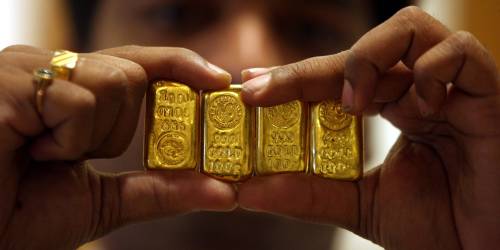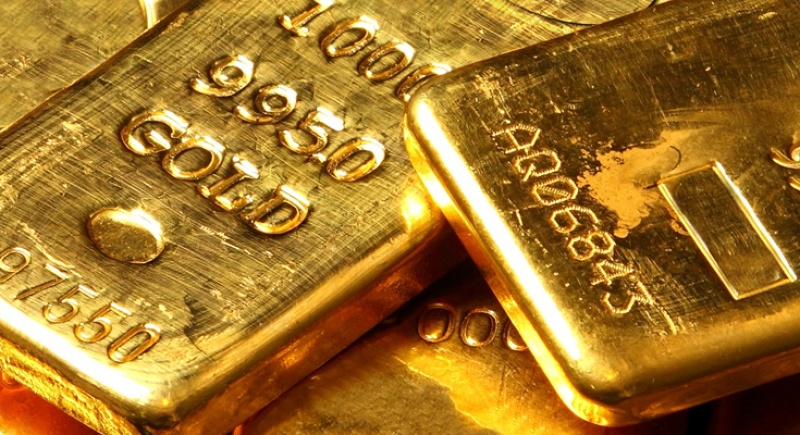4 Ways To Invest In Gold With Little Money-Business2Business
The ancient tradition of accumulating gold for the future is a great way to diversify an individual's investment portfolio. The yellow metal is a hedge against
- by B2B Desk 2020-12-09 06:42:15
It has been a prevalent tradition among Indians to invest in gold for financial security and for emotional reasons. Important events in Indian homes are marked with the purchase of the precious metal. They are grouped together to counteract deficiencies that could arise in an uncertain future.
The ancient tradition of accumulating gold for the future is a great way to diversify an individual's investment portfolio. The yellow metal is a hedge against inflation and a safe haven amid economic uncertainty.
This year, due to the sudden outbreak of COVID-19, gold prices in India and abroad rose more than 20%. In the face of any positive news about the vaccine trials, more and more investors stopped their money in the metal and ditched risky assets, causing gold prices to hit new records.
However, in 2020, Indians chose metal as an investment, beyond ceremonial or marriage purchases.
Between July and September this year, the demand for gold jewelry declined 48% year-on-year, to 52.8 tonnes, from around 101.6 tonnes a year earlier, according to the World Gold Council. However, demand of the yellow metal as an investment rose 52% to 33.8 tonnes, year-over-year, which is a clear indication that Indians have preferred gold ETFs over jewelry.
Also during the same period, that is, in August, the mineral reached its highest level in its life with 56,191 rupees per 10 grams. By comparison, prices were around Rs 38,000 for 10g in November 2019.
According to data from the Mutual Fund Association of India (AMFI), the number of securities in gold ETFs increased from 3.77 lakh in October 2019 to 7.82 lakh in October 2020.
This is because investing has been simplified for Indian investors, thanks to the improved adoption of digital investment and money transfer patterns. One can start investing in gold for one rupee armed with a smartphone, internet connection, and a bank account with access to online banking services.
The main benefits of investing in gold regularly come from the block
- You can invest with little money, which is beneficial given the increase in prices.
- Help calculate average costs. You should be aware that gold prices fluctuate based on changes in international markets and the exchange rate of the rupee. Over time, buying at different rates will help calculate the average highs and lows of prices throughout the year.
- None of the following gold investment methods require you to worry about storing the metal, which makes it safe to own. It also eliminates the expenses incurred for insurance, waste, levying fees, etc. that arise from the physical purchase of the precious metal.
Here are 4 ways to invest in gold with less money:
1.The gold ETF
Internationally, gold exchange-traded funds (ETFs), exchange-traded funds (ETCs), and similar funds account for almost one-third of the demand for investment gold.
Gold-backed ETFs are regulated financial products.
As the name suggests, they are listed on exchanges and can be purchased from your trading account which is used to buy stocks. They are sold as units (as shares) where each unit represents a specific quantity of gold and the unit price reflects the price of the unit quantity. Unlike gold derivatives, most of these ETFs are fully backed by physical gold.
Investors can track price changes on an exchange and buy or sell instantly with a trading account.
The three most important benefits of gold ETFs are:
- You can only buy one unit of the ETF.
- No need to organize metal storage.
- You can buy the metal at the best price by tracking the price action and buying online.
Gold ETFs combine flexibility, ease of trading in the stock market, and the advantages of physical ownership of gold.
2. SGB
They are bonds issued by the Indian government that allow subscribers to buy gold in the form of dimes.
These bonds also bear interest at 2.5% and can be purchased when the Reserve Bank of India (RBI) opens the issue for subscription or on the open market.
It can be purchased online at commercial banks or physically at specific post offices. Bonds already listed can be bought on exchanges.
A resident Indian can purchase a minimum of 1 gram and a maximum of 500 grams per fiscal year by participating in the program.
3. Accumulate gold digitally through paid apps
Popular payment apps like Google Pay, Paytm, PhonePe, and MobiKwik allow users to purchase 24k gold with 99.9% purity in quantities as small as 1 gram at current market prices. Some apps give you the option of bringing metal into the house.
These applications are associated with the alloy refining company MMTC-PAMP India to allow users to buy and sell the metal in these applications.
In Google Pay, users can buy gold for just 1 rupee at the latest exchange rate and MMTC-PAMP will store the amount on their behalf.
4. Gold investment funds
These are variable capital funds that invest in gold ETFs. The plus point is that it allows you to see fluctuations in the price of gold and professional for-profit fund managers.
There are expert fund managers who keep a close eye on the fluctuations in the gold ETF market and decide to intervene to maximize returns for their investors.
Also Read: Amazon India brings the Watch Party to Prime Video - here's how to use it

POPULAR POSTS
Best Silver Investment Platforms for 2025: From CFDs to Digital Vaults Explained
by Shan, 2025-10-23 12:22:46
Best Investment Plans in India for 2025: A Complete Guide to Grow and Protect Your Wealth
by Shan, 2025-09-18 10:20:46
Which venture capital firms are the most active in funding Indian startups in 2025
by Shan, 2025-08-06 10:42:11
Top 5 Apps to Buy Digital Gold in India (2025): Safe, Simple & Secure
by Shan, 2025-08-01 10:24:51
10 Highest Dividend Yield Stocks in August 2025
by Shan, 2025-07-28 09:31:02
Exchange-Traded Fund (ETF): A Practical Guide to Smart Investing
by Anmol Chitransh, 2025-04-17 10:18:20
The Ultimate Guide to Commodity Trading: Strategies, Risks, and Opportunities
by Anmol Chitransh, 2025-04-02 07:06:01
RECENTLY PUBLISHED

Loan EMIs to Drop as RBI Slashes Repo Rate - Full MPC December 2025 Highlights
- by Shan, 2025-12-05 11:49:44

The Agentic Revolution: Why Salesforce Is Betting Its Future on AI Agents
- by Shan, 2025-11-05 10:29:23

Pine Labs IPO 2025: Listing Date, Grey Market Premium, and Expert Outlook
- by Shan, 2025-11-05 09:57:07

Top 10 Insurance Companies in India 2026: Life, Health, and General Insurance Leaders Explained
- by Shan, 2025-10-30 10:06:42

OpenAI Offers ChatGPT Go Free in India: What’s Behind This Big AI Giveaway?
- by Shan, 2025-10-28 12:19:11





 Subscribe now
Subscribe now 